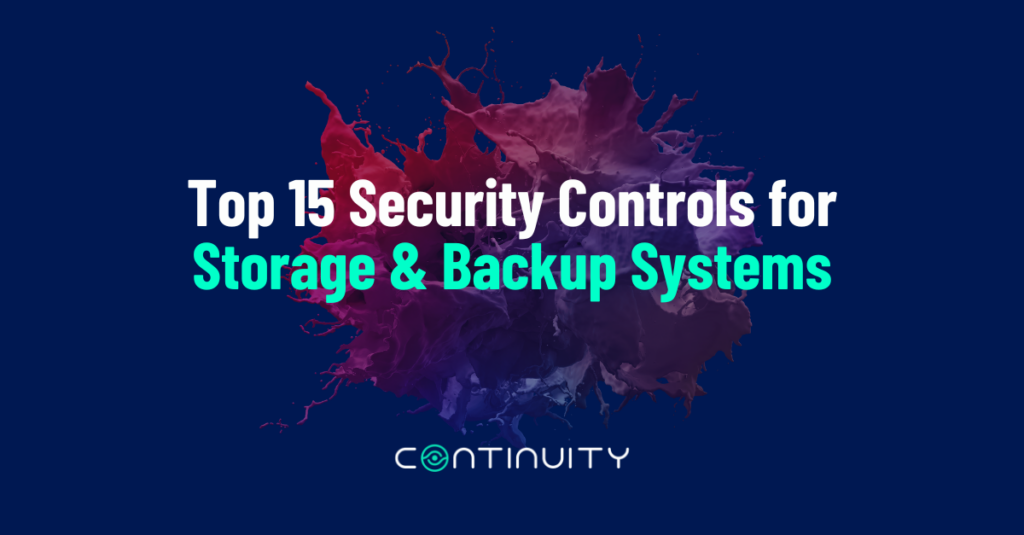
Top 15 Security Controls for Storage & Backup Systems
About Continuity™
StorageGuard - by Continuity™ - is the ONLY Security Posture Management solution for Storage & Backups, helping to ensure these systems are securely configured, and compliant with industry & security standards.
As cyber threats increasingly target infrastructure-level components, securing your storage and backup systems has become mission-critical. These systems hold the keys to your recovery, and if compromised, they can bring your entire organization to a standstill.
Here are the top 15 security controls every enterprise should implement to ensure a resilient, ransomware-resistant storage and backup environment:
1. Multi-Factor Authentication (MFA)
Ensure all access to storage and backup interfaces (UI, CLI, APIs) requires MFA. This is your first line of defense against compromised credentials.
2. Dual Control on Destructive Actions
Require approval or dual authorization for destructive actions such as data deletion, snapshot removal, and replication configuration changes.
3. Backup Segmentation
Segment your backup infrastructure at the network, domain, and identity levels. Avoid shared authentication (like AD) between production and backup systems to reduce lateral movement risk.
4. Immutable Data Copies
Implement secure, non-modifiable backups using retention-locked snapshots and immutable storage technologies on both primary and secondary systems.
5. Access Control Lists (ACLs)
Define strict ACLs for all storage and backup management interfaces. Limit access to only the personnel and systems that absolutely need it.
6. Least Privilege Access
Follow a “just enough access” model — ensure users and service accounts have only the minimal permissions required to perform their functions.
7. Least Functionality
Disable unused services, ports, and protocols on storage and backup systems to reduce the attack surface.
8. CLI Authentication & Authorization Control
Enforce strong authentication and role-based authorization for command-line access. Treat CLI access as sensitive as administrative UI access.
9. Syslog Integration
Send all audit logs, access attempts, and configuration changes to a centralized, secure syslog or SIEM platform for monitoring and alerting.
10. Encrypted Communications
Ensure all management traffic, backup data movement, and replication processes use encrypted channels (e.g., TLS, SSH, IPsec).
11. Zero Trust Architecture
Apply zero trust principles across your infrastructure: treat all components — storage controllers, replication targets, hypervisor plugins — as potentially untrusted, and enforce mutual authentication and isolation.
12. Media Diversity in Backups
Store backups across multiple types of media and platforms (e.g., disk + object + tape + cloud). Don’t rely solely on one vendor or media type.
13. Security Baseline Deviation Detection
Continuously monitor for configuration drift or unauthorized changes to critical storage and backup settings.
14. Secure Storage Protocols
Use secure storage protocols such as NFSv4.1 with Kerberos, SMB3 with signing/encryption, and secure S3 implementations
15. Ransomware / Anomaly Detection
Leverage backup-integrated or third-party tools to detect unusual behavior, encryption patterns, or data deletion.
Talk To An Expert
It’s time to automate the secure configuration of your storage & backup systems.